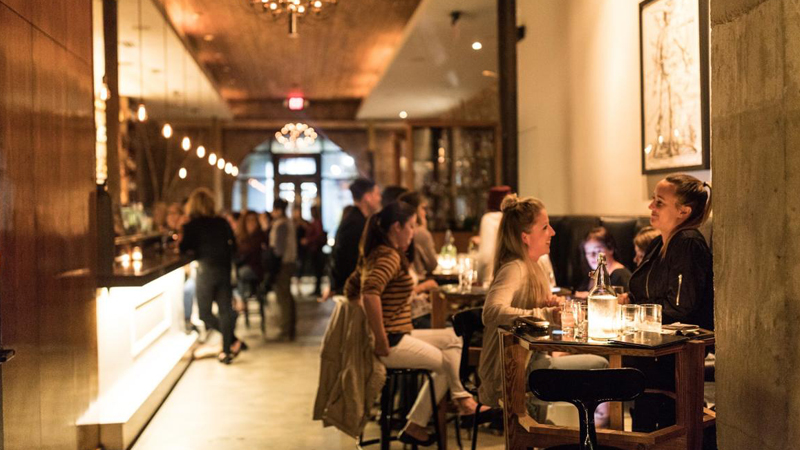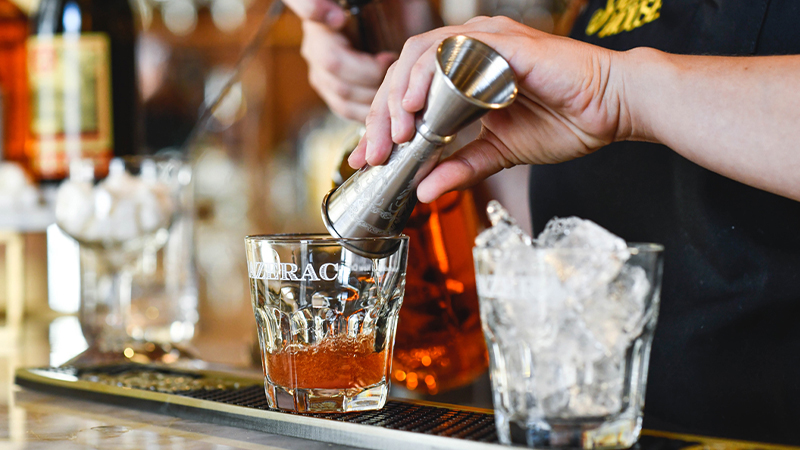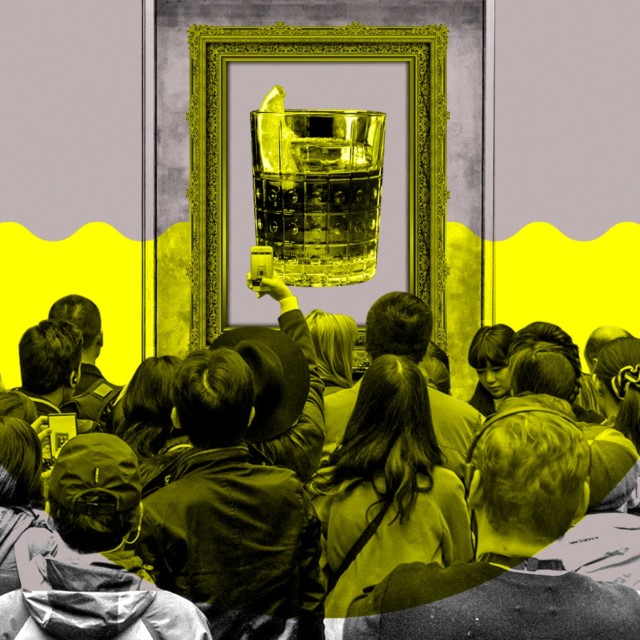No one event in American history had a greater negative impact on drinking culture than Prohibition. Though America went “dry” for just 13 years, it took decades before the country regained an appreciation for the finer aspects of wine, beer, and spirits. If we look for similar events that propelled us back onto the right track, in wine, we might point to the Judgment of Paris. In beer, it’s impossible to look past the legalization of homebrewing. And in spirits, which seemed to lag longest, all credit must go to the craft cocktail renaissance of the late ‘90s and early 2000s.
Exactly how far cocktail culture has evolved since then is harder to measure. Anecdotally, I think about how I can walk into most bars in my decidedly unhip neighborhood of Queens, New York — locales you might not consider dive bars, but that don’t sling craft cocktails, either — and order an Old Fashioned with some degree of confidence.
But is there a more accurate way to gauge our progress? Rather than looking only at the quality of bartending in general, if we dial in to the ingredients used to make certain classics, perhaps the Sazerac is a better yardstick by which to measure how far we’ve come.
Multiple factors contribute to the Sazeracs of 2021 having a higher ceiling for quality and being even more historically accurate than those stirred at the turn of the century. Absinthe didn’t become legal again in the U.S. until 2007, for example. Then there’s the rye category, which has exploded both in breadth and depth. While the Sazerac is not solely responsible for these factors, given that both ingredients are intrinsic to its preparation, the cocktail is hugely symbolic of how drinking culture has progressed.
A New Orleans Icon
The Sazerac may not quite place in the highest echelon of classic cocktails, alongside the likes of the Martini, Manhattan, and Old Fashioned, but an icon it undoubtedly remains. The official cocktail of New Orleans (though not Louisiana, as is often erroneously stated), and widely held as one of the oldest cocktails, period, the Sazerac arrives with the requisite historical baggage that adds color to any classic — because beyond tasting good, the canons of cocktail culture must have a good story to tell.
In the realm of the Sazerac, that story revolves around one question: Is it historically a Cognac- or rye-whiskey-based drink?
This source of contention continues to provide fodder for divisive, if niche, barstool debates. Yet even those who remain firmly planted in the Cognac camp would surely concede that for the majority of its existence, the Sazerac has been more closely associated with rye. This association is handy for the purposes of this piece, allowing us to explore the stunning metamorphosis of the historic whiskey style during the past few decades.
The Rye Resurgence
While it continues to lag well behind bourbon, rye consistently posts impressive growth. In 2009, volume sales sat at just 88,000 9-liter cases, accounting for $15 million in revenue for suppliers, according to data from the Distilled Spirits Council. Since then, the category has surged. Volumes increased a whopping 1,500 percent to 1.4 million 9-liter cases in 2020, with the value hitting $275 million.
At the New Orleans bar Cure, which is widely credited with pioneering the craft cocktail movement in the city, the team has a saying relating to the city’s patron cocktail: “Nothing’s sacred except for maybe the Sazerac.”
Neal Bodenheimer, the bar’s owner and co-chair of the Tales of the Cocktail Foundation, therefore struck me as an ideal individual to explore my hypothesis with. He was quick to agree on the significance of the legality of absinthe, and also pointed out the ease with which one can now pick up a bottle of the cocktail’s signature bitters. “You used to have to seek out Peychaud’s; now you can get them anywhere in the world,” he says.
But on the topic of rye, Bodenheimer hastened to accept my theory that the quality and quantity on offer has never been better. While the field has undoubtedly widened, he says he could pick up a bottle of six-year bonded Old Rittenhouse for around $11 in the mid-aughts. As the popularity of rye has grown, he feels the quality and age of the liquor inside the bottle is not quite what it used to be — though this does again speak to the surging popularity of rye compared with a decade or so prior.
“It may be possible to customize your selection more, but because of the low demand, you could grab a quality rye with a little more ease 13 years ago,” Bodenheimer says. On the other hand, he notes that the most exciting developments taking place in the rye space now come via craft distillers — a notion that some might feel would have been laughable two decades ago.

Chris Hannah offers a different stock phrase when discussing the Sazerac: “I like to say it’s consistently the most inconsistently made cocktail in the world,” he tells me. “It has a recipe. Everyone knows the recipe. But everybody makes their own version.”
Hannah moved to New Orleans 18 years ago from Baltimore, where he’d already clocked up six years working behind the stick. This experience, he thought, qualified him as a “proper” bartender. Then he arrived in the Big Easy and found drinks he’d never heard of (the Sazerac) made with ingredients that weren’t on the back bars of the restaurants he’d previously worked at (rye whiskey).
Hannah’s contribution to the endurance of the Sazerac in New Orleans is up there with anyone in the city, having worked at the legendary Arnaud’s French 75 Bar for 15 years before leaving to open NOLA’s Jewel of the South. Though he falls into the Cognac camp, he agrees with Bodenheimer on the modern-day importance of the quality rye being put out by some, if not all, smaller producers. “Knowing that these distillers can come out with an equal or superior product is keeping the bigger houses on their toes and not resting on their laurels,” he says.
And resting on their laurels they most certainly are not. Look at any major American distillery and there’s a high chance it’s introduced a rye to its lineup in recent times. In the last year alone, Heaven Hill added a rye to its core Elijah Craig line; Campari, which already offered a Wild Turkey Rye, debuted a Rare Breed rye extension; meanwhile, Old Forester introduced a single-barrel, cask-strength rye. Put simply, all the trends we’ve seen play out in bourbon over the past two decades are now also seeping into the rye world.
“Our rye category offerings have grown [in] volume over 300 percent over the past 10 years, and we have been adding to our rye whiskey mash bill inventory in aging barrels to accommodate for that,” Susan Wahl, vice president of American whiskeys at Heaven Hill, writes in an email.
Raising the Bar
Wahl is among many in the industry I’ve communicated with (for this and other features) who credit the craft cocktail renaissance with directly impacting the health of American whiskey. “A return to classic cocktails certainly gave renewed attention to rye whiskey,” she notes.
Though perhaps not notable within the realm of evolving cocktail and spirits culture, we can not move on from rye without mentioning the Sazerac brand. To my mind, no other cocktail exists for which drinkers can directly reach for a base spirit whose brand shares the same name as the drink. (Martini drinkers should note that I’m speaking base spirits, specifically.)
Once again, this is another example of the bar industry’s influence on the spirits field, as Rhiannon Enlil of the Sazerac Company explained to me.
Enlil is another New Orleans transplant who moved to the city in 2000. On top of years of experience working in the city’s bars, she also wrote her undergrad thesis on historic beverage trends of 20th-century New Orleans, while studying at the city’s university in 2016. Since 2019, she’s worked as an experience team leader at the Sazerac House.
“When the Sazerac company launched Sazerac rye in 2006, it was really to put that name on a bottle of wonderfully produced whiskey, and get it in the hands of New Orleans bartenders,” she says. During her studies, Enlil also found that, while the cocktail saw a revival in major cities beginning in the mid- to late-aughts, this wasn’t the case in NOLA. “It never went away in New Orleans. It just went under the radar,” she says.

Absinthe Makes the Heart Grow Fonder
With ever-expanding rye options, and the increasing availability of Peychaud’s, the final piece of the Sazerac puzzle arrived in 2007 with the legalization of absinthe.
Here, we risk a certain amount of hypocrisy. For while it is true that the bonafide Sazerac recipe contains absinthe, the same could be said for Cognac. And just as rye has overtaken brandy’s place in the cocktail, with the green fairy being illegal stateside for nearly all of the 20th century, most bartenders turned to New Orleans’ anise-flavored Herbsaint liqueur as a stand-in. The same remains true in many notable bars to this day.
Owned and produced by the Sazerac Company — just like Sazerac Rye and Peychaud’s Bitters — Herbsaint even enjoyed an upgrade in 2009, with its alcohol bumped up to 100 proof to commemorate the brand’s 75th anniversary. (And no doubt to compete with the higher-proof, now legal absinthes that bartenders could return to.)
Still, the legalization of absinthe feels significant for this topic because its availability has allowed bartenders to once again deliver a historic version of the cocktail that they couldn’t for nearly 100 years. That the TTB would finally look past the myths that had seen it banned owes large credit to the work of importer, producer, historian, and scientist Ted Breaux. It also signals another step in the (slow) maturation of America’s relationship with alcohol.
Just as with rye, viewing the range of absinthes now on offer in the U.S. also highlights the growth of craft distilling in the country. Alan Bishop has had a hand in a number of those bottlings, having developed four absinthes for Kentucky’s Copper and Kings, another for Florida’s Key West Trading Co., and a few expressions for Indiana’s Spirits of French Lick, where he currently works as head distiller.
Given the spirit’s recent reintroduction in the U.S. market, Bishop has tended toward a lighter, sweeter style of absinthe that he believes better resonates with American drinkers. But things are slowly changing on that front. “We’re finally at a phase where consumers outside of New Orleans actually care about absinthe,” he says, adding that interest seems to have really picked up over the past two years, and the past 12 months in particular.
Bishop also agrees that bartenders helped “open the door” for craft spirits in general. “Now I think curious consumers are kicking the shit out of the door and figuring out what to do with them on their own,” he says.
The Changing Status of the Sazerac
While the Sazerac’s relevance in this study of drinking culture evolution comes largely via its constituent ingredients, we should not look past the drink itself. It’s definitely not as ubiquitous as Martinis, Manhattans, and Old Fashioneds, and it surely remains “consistently inconsistently” made. But at the same time, no longer can budding bartenders wind up in New Orleans with no prior knowledge of the city’s official cocktail — nor any other major city worth its bartending salt, for that matter.
At New York’s Maison Premiere, a love letter to New Orleans, oysters, absinthe, and classic cocktails, managing partner and bar director William Elliott pondered just how much has changed for the Sazerac in the decade since his bar opened.
In 2011, the cocktail would have been the “perfect litmus test” for gauging the skills of any bartender who turned up at his door looking for a job, Elliott says. At the time, not all bar chefs would have gained the required experience to execute the cocktail’s fine line of balance. “I don’t think any bartender would try to work here without being confident in their skills to make a Sazerac at this point,” he says.
For guests, Maison Premiere also offers a “Tableside Sazerac Service.” The bar offers two versions of the cocktail, prepared theatrically in front of patrons. A rye version sells for $34, while the other, made with vintage Cognac from 1946, super-premium absinthe, and barrel-aged Peychaud’s, retails at $96 a pop. “It actually sells quite well considering it’s a hundred-dollar drink,” Elliot says.
Take a moment to let that sink in, as drinkers of the “St. Bernard” Sazerac no doubt remind themselves after each sip. And while you do, soak up the words of NOLA’s Hannah on the progress of his profession: “When I started bartending,” he says, “I never thought I’d be in a magazine.”
That’s a hell of a long way for bar culture to travel in a relatively short amount of time. Twenty years ago, were there cocktails in New York City that would see next to no change given for a crisp Benjamin Franklin? Almost certainly, yes. But at a bar in Brooklyn, that didn’t cater specifically to expense-account-holding finance bros?
Above all, the fact that one of America’s oldest cocktails is the measure by which we can gauge just how far we’ve come in 15, 20 years seems like a fittingly romantic notion. Cocktails owe just as much to their story as their taste, after all. For large parts of the cocktail renaissance, our collective gaze remained firmly and long into the past. But drinks like the Sazerac show us that more recent history, the present, and even the future, are just as important in these tales.
